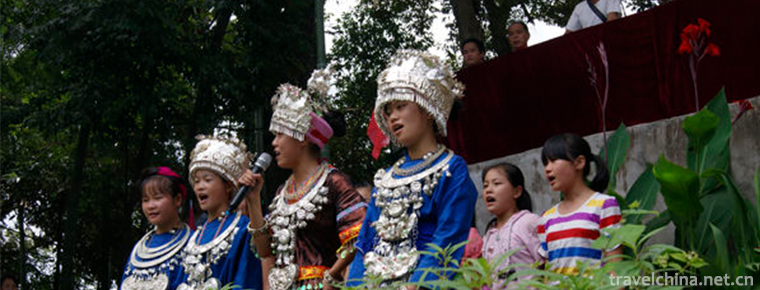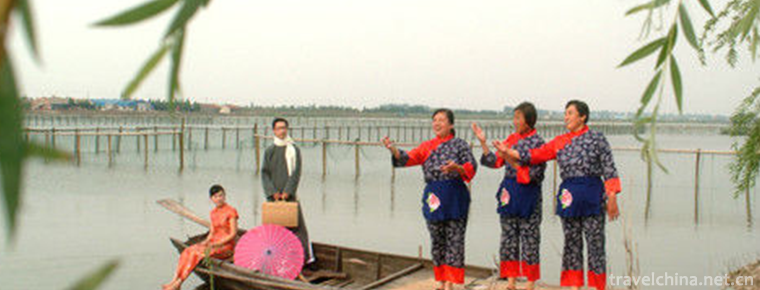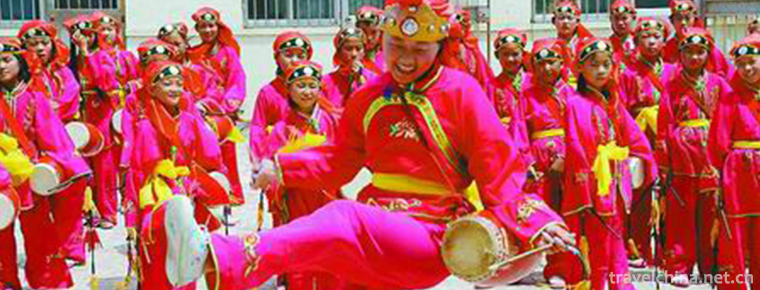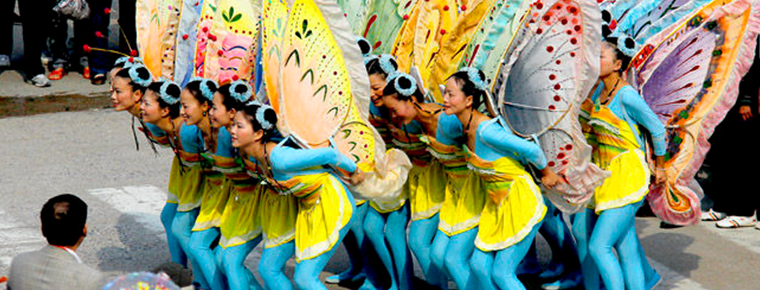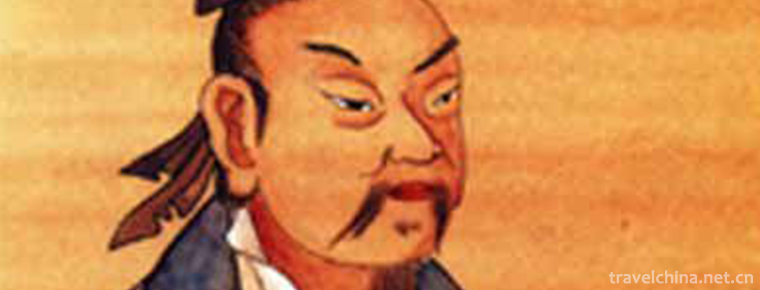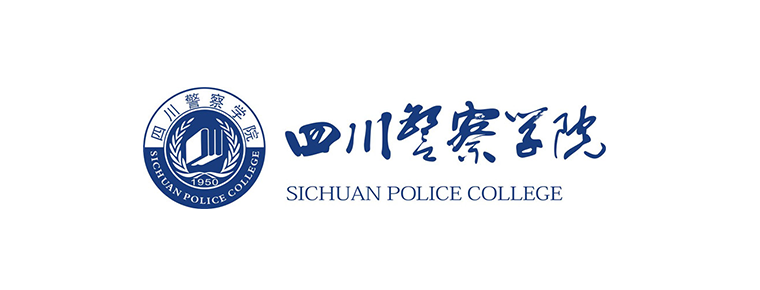Uygur traditional knife making skills
Uygur traditional knife making skills
Xinjiang handicraft knives (Yingjisha knife, Guizi knife, etc.) are generally more than ten or twenty centimeters long. The largest is more than half a meter and the smallest is only about two inches. They have different shapes. Such as crescent moon, fish belly, Phoenix tail, eagle, red-billed Jay and Lark head, no matter what style, the workmanship is very fine and the appearance is pleasant. Yingjisha knife in Xinjiang is named for its main producing area, Yingjisha County. It is one of the traditional Uygur handicraft products with hundreds of years of production history. It has beautiful shape, smooth and bright body, sharp edge. No matter what kind of knife handle, the handicraft knife craftsmen in Yingjisha have to inlay vivid patterns on it to form a national style pattern. Some knife handles are embellished with silver, copper, jade, bone and precious stones. They are exquisite and magnificent, which makes people fond of it. And with exquisite sheath, easy to carry. Yingjisha knives are mostly curved knives, with wooden, horny, copper and silver handles, which are very exquisite.
On June 7, 2008, the Uygur traditional knife making skills were approved by the State Council and listed in the second batch of national intangible cultural heritage list.
brief introduction
Authentic Yingjisha handicraft knife (Yingjisha knife) is made of special stainless steel carefully selected by the knife craftsmen. After making coarse and fine embryos, it is polished with a file and then quenched. Quenching is a skill handed down from generation to generation by knife craftsmen. It is kept secret from each other and never passed on. The knife blade of Yingjisha handicraft, which has been quenched by famous artists, is sharp and used to scrape iron bars, but scraps of iron emerge, while the knife blade has not broken or rolled. The knife handle with inlaid decoration of pure silver and gemstones is also exquisite, and the price is relatively expensive. Nowadays, small knife craftsmen generally use colorful organic glass and gemstones to decorate the handle. The logo of Yingji Sand Knife, crescent, gourd, pomegranate flower, Padan wood flower, and the name of handicraft knife craftsman, etc. Inside the sheath of Yingjisha handicraft knife is a thin wooden knife room, wrapped in embossed sheepskin, usually magenta and rose red, and also black and brown, all hand-made.
About 400 years of history. It has excellent material selection, exquisite workmanship, beautiful shape, beautiful pattern and strong national style. Yingjisha knife has developed to 16 varieties and more than 30 colors. There are mainly the Phoenix Tail style, lark style, Oriole style, red-billed Raven style favored by Kazakhstan, Longquan sword style favored by Han nationality, beast horn style favored by Mongolian nationality, etc., which have high ornamental value.
Inheritance value
Xinjiang (formerly known as the Western Regions) in China is a place where ethnic minorities (formerly known as Manyi) live together. The Silk Road has a long history. Like other ethnic minorities in the world, it has unique aesthetic taste and superb handicraft skills. In addition, it is a place where Chinese and Western cultures converge and has rich and profound cultures of several countries. Accumulation, so that Xinjiang has become a gathering place of handicraft with national characteristics. There are boundless grasslands, unfathomable deserts, the farthest cities from the sea, the lowest point in the world, the jades of Hotan, the gold of Altay, the snow lotus of Tianshan, the Xinjiang knife (including Yingjisha handicraft knife, Kuche handicraft knife), the pomegranate of Hotan, the grapes of Turpan, Hami melon and so on. Handicraft knives are inseparable articles and ornaments for ethnic minority men. Daily watermelon cutting, meat cutting and knife cutting are inseparable. Therefore, the craft knives are becoming more and more sophisticated. Xinjiang Uygur handicraft products have strong Uygur (millennium) customs, and the handicraft knife handle is used percent. Bai selected brass, yak horn and artificial gemstone. Xinjiang handicraft knife blade is manually made of high quality super hard black steel, bearing steel, spring steel, pattern steel, etc. It is extremely sharp, double-sided bleeding trough, absolutely authentic, small knife body is water-grinded and engraved, knife handle is made of brass and has a lot of weight, inlaid with ox horn. In addition to the sharp edge of the knife, it also talks about investigating the shape, the handle of the knife has copper, bone and so on, inlaid with silver, copper, jade, gemstones, etc., to form a fine pattern. The sheath is pressed with a cattle and sheepskin die. Among all the handicraft knives, the knives in Yingjisha and Kuche are the most famous. Yingjisha handicraft knife (Yingjisha knife) has a long history, excellent material selection, exquisite workmanship, beautiful shape and decoration. It is a good gift, treasure or tourist souvenir.
Culture
Shaya knife is named after the county. It has a long history, exquisite traditional craftsmanship and exquisite shape. It is the pride of Shaya people. When you come to Shaya County, the local people will show you a kind of delicate knife made by Uygur people, Shaya knife.
Igel Zibaza
Shaya County, located in the northern Tarim Basin, is a county in Aksu area. It is said that as early as 1010 AD, Zuo Wen, Prime Minister of the State of Turtles, paid tribute to the emperor of the Song Dynasty with a Shaya knife.
Nowadays, Shaya has modern squares, wide roads and numerous buildings. However, there is still an old street in the county town. Uygurs call it "Yigel Zibaza", which means a market for Saddlers and fixtures makers. There used to be a world of craftsmen, blacksmiths, cobblers, "Pichaukech" (as a knife), horseshoe nails, small farm tools to do everything, very lively. The street, about 200 meters long, is lined with small shops next to each other. On both sides of the road, a sheet is laid, on which the size of Canton, Canton, axe, hawk nail, sickle, hoe, planer, rake, plough, shovel, iron pot, spoon, kitchen knife, etc. are dazzling. Most of the knives are sold in stores, and the various "Shaya knives" displayed in glass cabinets on the roadside attract customers. Most of the small knives are sold by Uygur women of good age, who are enthusiastic in attracting customers.
There are many places where knives come out in Xinjiang, including Yingjisha knife, Shache purchasing folding knife, Yili Shamusak folding knife, Hetian Moyu Kuiya folding knife and so on. Uygur knife has a long history. Because of its exquisite workmanship, it has become a famous brand product in Xinjiang. Among the numerous knives, Shaya knife is unique with its delicate and exquisite decoration. The knife we see on this street is generally only as long as a cigarette (8-9 cm), and the smallest is only 3 cm. It is like a beautiful work of art, which makes people fond of it.
Inheritance Characteristics
Starting from Kashgar, the largest city in southern Xinjiang, it passes through Shufu County, Aktao County and Yingjisha County to the south, and then through Shache County and Yecheng County to the southeast, to Hetian District, and Moyu County to the east from Percutaneous Mountain County.
On this way, almost every county has one or several famous specialties. With "pistachio" (pistachio), Aktao has almond, Yingjisha has craft knife, Shache has almond (almond), Pishan has pomegranate, Yecheng, Moyu has walnut, the oasis in this desert is quite rich.
The reporter of China Economic Weekly arrived at Moyu County in Hetian District with the "Three People" (visiting the people, benefiting people's livelihood and gathering people's hearts) of Xinjiang Science and Technology Department, and went deep into the Uygur villages in southern Xinjiang, feeling the unique economic and social development situation here.
In Hetian, whether in the city or in the countryside, all eyes are green. Trees or crops are thriving, but all plants and buildings are covered with thick loess.
Local people say that nearly 200 days a year are "dumped" here. There is an old saying: "The people of Hotan have a hard time. They have to eat two or two dumps a day, but they can't make up for it in the daytime or at night." Hetian area is adjacent to Taklimakan Desert to the north and Karakoram Mountain Glacier Mountains to the south. Glacier melt water nourishes the oasis. The wind blows dust from the desert over the oasis. Thus, there is a special landscape of yellow dust on the green leaves.
Hotan produces jade. In Hetian City, you can see the shops selling jade everywhere. Even the hotel lobby will have a special counter with jade and jade articles. When you go out, the old Uighur people in flower caps will sell you the jade and stone packaged by him. Moyu County, which belongs to Hetian, is also named for its production of moyu. However, the local people told reporters that after a few years of intensive mining, there are not many jade resources in Hetian, and most of the jade deposits have been prohibited from mining. Therefore, it is difficult to distinguish the true from the false and the grade of the jade seen on the market.
Cultural Customs
Folklore activities are closely related to the daily life of the people of all nationalities, and they always affect your life. The custom of Uygur people in Yingjisha County of Southern Xinjiang to make and wear Yingjisha knives comes from the habit of nomadic people to wear horse knives. Influenced by this custom, the people of all nationalities in Yingjisha County also developed the custom of wearing knives. Folklore activities are mostly related to ancestor worship and totem worship. Understanding and participating in the folk activities of other nationalities and respecting the worship of other nationalities are conducive to drawing closer the relationship between compatriots of all nationalities. Dragon dance is a typical totem worship of the Han nationality. Uygurs regard trees as their ancestors. "Populus euphratica is immortal for a thousand years, immortal for a thousand years, immortal for a thousand years, immortal for a thousand years." That is to say, it comes from the worship of Populus euphratica by the Uygur people and has become a symbol of the spirit of all ethnic groups in Xinjiang.
Inheritance of Skills
In Moyu County, every breath you will smell the aroma of various skills, wood carving, knife, hemp sugar, barbecue... With the persistence of generations of craftsmen in Moyu County, these skills have been handed down to the present day. Nowadays, with their exquisite skills, the ink and jade craftsmen have thrown poverty into the distant past. They have become the leaders of market economy in Moyu County, Chaozhou children, and some have fulfilled their entrepreneurial dreams by virtue of their skills, and become quite famous economic leaders in Moyu County.
The beautiful Moyu County has a vast territory, rich humanities and history, and rich and colorful national culture. Many excellent people and touching things have emerged from all walks of life in Moyu County. Their colorful stories have gathered into an exclamatory "Moyu Story", which adds charm to the Hanhai Pearl Moyu County.
For this reason, this newspaper has launched a series of Moyu stories, such as Moyu love story, Moyu entrepreneurship story, Moyu home story, these stories tell the wonderful life of Moyu people from different perspectives. In Moyu County, there are still many talented people, talented people and craftsmen. This newspaper has launched a series of stories about Moyu Daren. Today, it publishes the last one, which tells the stories of those who have made contributions to the economic development of Moyu County through unremitting efforts to get rich. Mai Mei Timin: Wood Artisan Who Gives Wood Life
People in Characteristic Areas
Yasen, a 24-year-old Uygur from Yingjisha County, Kashgar, Xinjiang, has lived in Baoying County for five years. He usually runs a steamed bread business with his brother. When he is busy, the brothers will return to Kashgar to help him.
According to the businessmen around, Ascendon is very hard-working, and usually buries his head in helping his brother make steamed bread. He gets along well with them. Hao, a businessman, said, "Last week an old man went to the booth in Asen in an electric wheelchair to buy steamed bread. There were so many good businessmen that the old man could not squeeze in. When he saw the old man, he greeted the people around him and took two fresh steamed breads and sent them to the old man first. At that time, I thought this young man was kind-hearted and kind! "
When it comes to my brother's rescue, my brother Tulson feels very proud. He told reporters that Yasen was kind-hearted from an early age. When he was doing steamed bread business in his hometown, he would give steamed bread free of charge when he met the old, the weak and the disabled. He could deliver more than 1000 steamed bread a year. His brother Tulson was very supportive of his brother's kindness.
In fact, on the night of saving people, Asen came home with a cold. His brother advised him to go to the hospital, but he felt he could stand it. He took a few cold pills and went to bed. The next morning, he went out to do business with his brother on time.
cultural heritage
Among the third batch of national intangible cultural heritage projects recommended by the representative successors listed on the website of the Ministry of Culture, 24 folk artists were selected in our district. Apart from the well-known Xinjiang songs and dances, the intangible cultural heritage projects represented by these successors also have many ethnic traditions such as Uygur traditional knife making, Kazakh felt house building and so on. Skills, rich content.
In this publication, 706 inheritors were selected, including 24 inheritors from Xinjiang. The intangible cultural heritage projects represented by the 24 inheritors involve six categories: folk literature, traditional music, traditional dance, folk art, traditional sports, recreation and acrobatics, and traditional skills. Among them, the oldest is 100 years old, is the Uygur "Dastan" project successor Shah Maimaiti. The youngest 44-year-old is Kurmanjiang Zikjea, the successor of the 62 Kwahner project of Kazakh nationality.
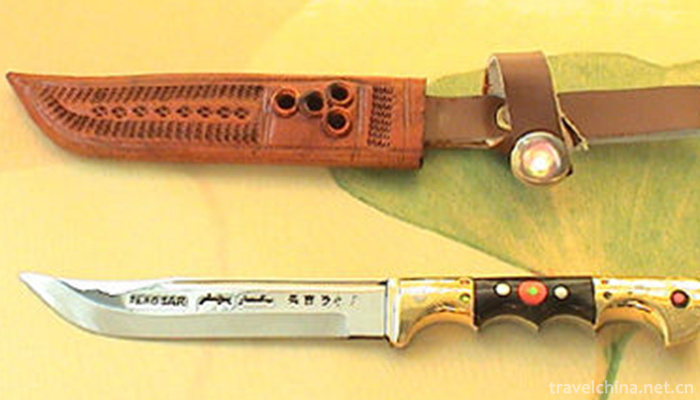
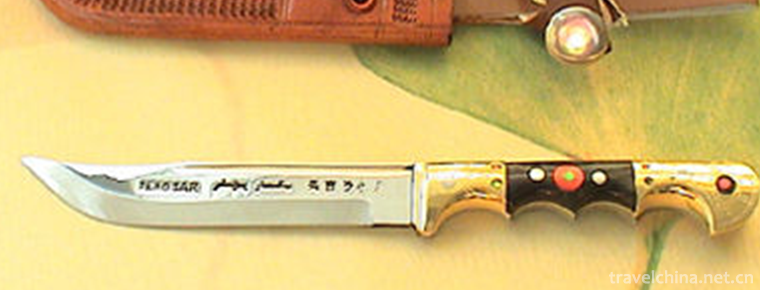
Uygur traditional knife making skills
-
Daming Palace Site in Changan City of Tang Dynasty
Daming Palace Site is located in Taihua South Road, Xi'an City, Shaanxi Province. It was destroyed in Binggong at the end of Tang Dynasty.
Views: 181 Time 2019-02-13 -
Forty eight Zhai Song Festival
The forty-eighth Village Song Festival is a northern Dong dialect Song Festival in Tianzhu County, Guizhou Province, China. It is a traditional national festival featuring Dong
Views: 374 Time 2019-05-01 -
Jiashan Tian Ge
Jiashan Tiange is a local folk song in Zhejiang Province. It belongs to a variety of Wuge songs. It is a unique form of ballad in Zhejiang Province. It is a song that workers sought comfort and expres
Views: 329 Time 2019-05-05 -
Shandong Huagu
Shandong Huagu is a traditional folk art form with Huagu as the main accompaniment instrument. It is also the only type of walking songs in Shandong folk art. Shandong Huagu is very good at expressing
Views: 174 Time 2019-06-13 -
Eighteen Butterflies
Eighteen butterflies is a local traditional dance form popular in the central part of Zhejiang Province (mainly in the area of Jinhua Yongkang). Twenty young women play the whole set of eighteen butte
Views: 122 Time 2019-06-15 -
Legend of Zhuangzi
The legend of Zhuangzi is a folklore of Dongming in Shandong Province. Chuang Tzu, Ming Zhou, Zixiu. According to the Records of History, it is recorded as the Mongolian people in the Warring States P
Views: 181 Time 2019-08-10 -
Sichuan Police College
Sichuan Police College is the only full-time undergraduate college of political, legal and public security in Sichuan Province, which is sponsored by the People's Government of Sichuan Province and jo
Views: 139 Time 2019-08-31 -
Southwest University of Science and Technology
Southwest University of Science and Technology is located in Mianyang City, Sichuan Province. The school is a university built jointly by the Sichuan Provincial People's Government and the Ministry of
Views: 222 Time 2019-08-31 -
Jintang Yunding mountain scenic spot
Jintang Yunding mountain is located in the middle section of Longquan Mountain in Jintang County, Chengdu. The scenic spots include Yunding mountain, Hantan ancient ferry, Jintang small Three Gorges of Tuojiang River
Views: 213 Time 2020-11-05 -
Tips for Chengdu Tourism
Views: 145 Time 2020-11-28 -
Social security in Deyang
In 2018, there were 748000 employees participating in basic endowment insurance, 345000 in unemployment insurance, 752000 in medical insurance, 384000 in industrial injury insurance and 399000 in maternity insurance. In the whole year,
Views: 346 Time 2020-12-14


